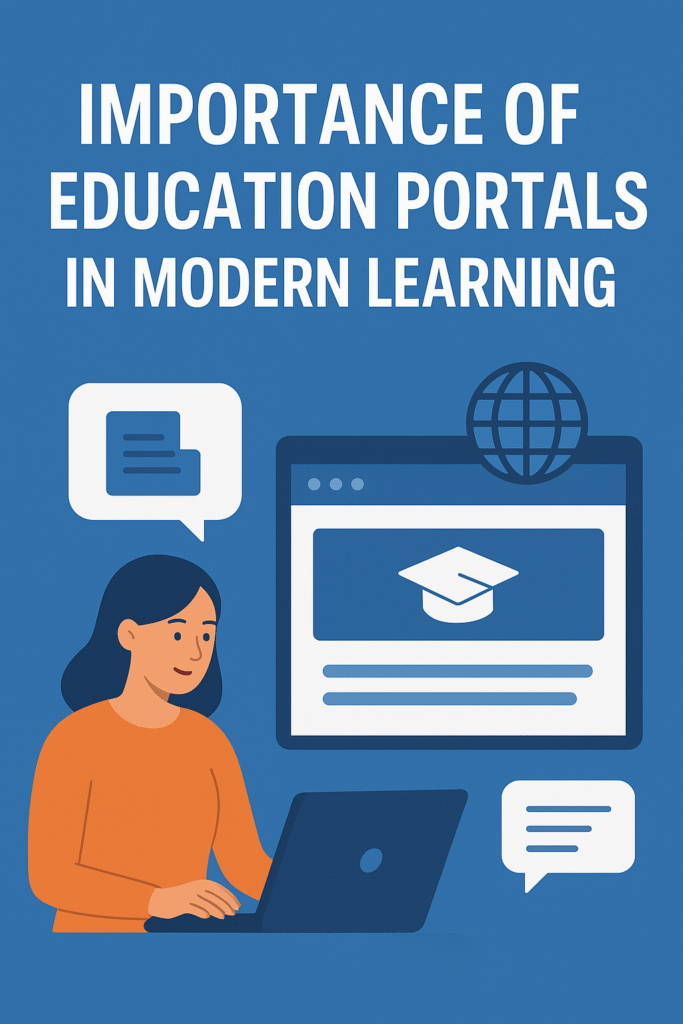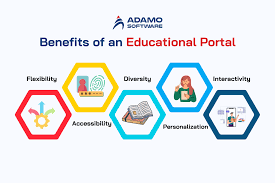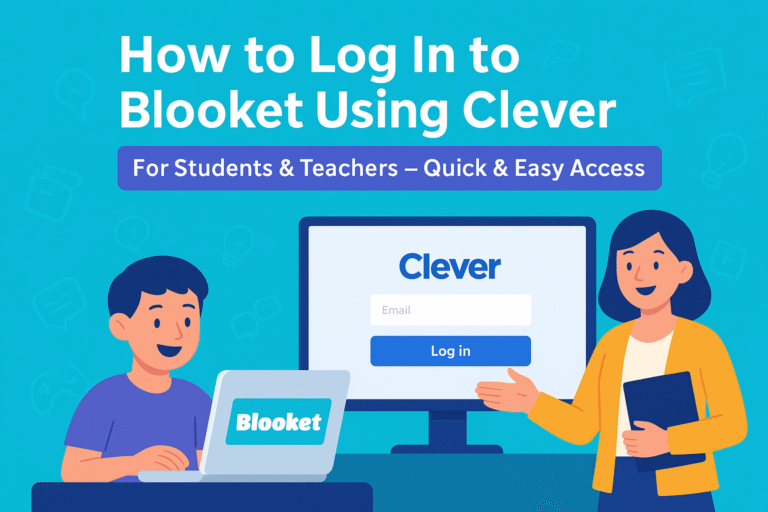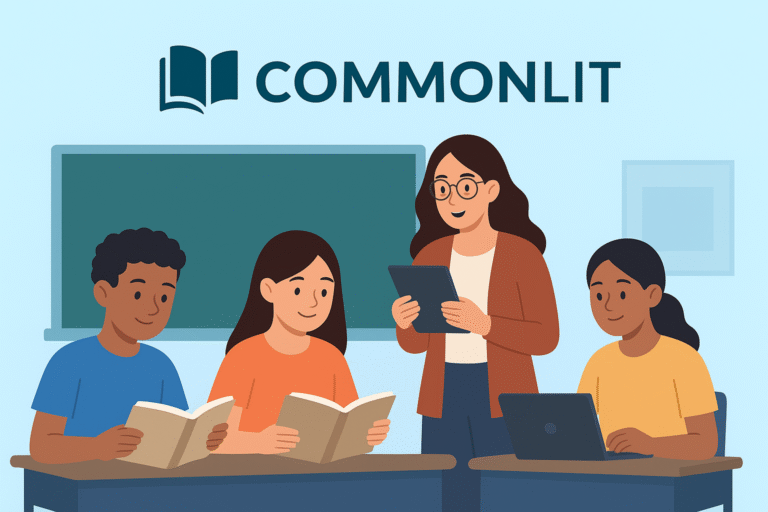Complete Guide to Education Portals Meaning, Types & Top Portals Worldwide 2025 & 26
An education portal is a digital gateway that connects students, teachers, and educational institutions through one online system. It offers resources like study materials, online classes, assignments, and results all in one place.
In today’s digital world, education portals have become essential for managing academic activities efficiently. They make it possible to access lessons, register for courses, or communicate with teachers anytime, anywhere.
Importance of Education Portals in Modern Learning
Education portals play a major role in transforming traditional learning into digital learning. They create a central space where students, teachers, and parents can interact without physical barriers.
Through these portals, schools and universities can easily share assignments, announcements, and exam schedules. Students can attend virtual classes, check their progress, and download study material. This not only saves time but also ensures transparency and communication between all stakeholders.

In 2025, with the growing trend of e-learning, portals have become the backbone of the education system bridging the gap between online and offline learning.
Main Features of an Education Portal
Modern education portals include powerful features that make learning simple and engaging. Here are the most common ones:
- Online Registration & Admission: Students can apply, upload documents, and track admission status easily.
- E-Learning Dashboard: Interactive lessons, recorded lectures, and quizzes available anytime.
- Student Information System: Stores and manages grades, attendance, and performance reports.
- Communication Tools: Messaging, chat, and announcements between students, teachers, and parents.
- Digital Library: Access eBooks, study guides, and journals from anywhere.
- Secure Login System: Role-based access for students, teachers, and administrators ensures data protection.
These features make education portals efficient, paperless, and fully digital for modern institutions.
Types of Education Portals
1. Student Portals
A student portal is designed specifically for learners. It allows them to check exam schedules, grades, assignments, and course materials. Most universities in the US provide student portals for easy access to personal academic data.
Examples include:
- PowerSchool Student Portal
- myStudentPortal
- Canvas Student Login
Student portals help learners manage their academic life without visiting the campus physically.
2. Teacher Portals
Teacher portals help instructors upload lessons, manage classes, and track student progress. Teachers can easily communicate with students, update grades, and monitor attendance in real time.
Popular examples include:
- Google Classroom
- Blackboard Instructor Portal
These tools reduce manual workload and make teaching more interactive and data-driven.
3. Parent Portals
A parent portal gives parents visibility into their child’s education. It helps them monitor performance, attendance, and school updates directly from their phone or computer.
Examples:
- Skyward Family Access
- PowerSchool Parent Login
Parent portals strengthen home-school collaboration and keep families informed about student progress.
4. University & College Portals
Higher education institutions use portals for admissions, exams, and research management. University portals combine several systems including learning management, student services, and financial support in one platform.

Examples include:
- Harvard University Portal (my.harvard.edu)
- Stanford AXESS Portal
- University of Phoenix Login
These portals simplify university operations and enhance the student experience.
5. Government & National Education Portals
Many countries operate national education portals for centralized student data and scholarships. These government portals support millions of learners nationwide.
Examples:
- USA: Federal Student Aid (studentaid.gov)
- India: National Scholarship Portal (NSP)
- UK: UCAS Admission Portal
- Australia: myGov Education Portal
Such systems ensure transparency and equal access to education resources.
6. E-Learning & LMS Portals
E-learning portals or Learning Management Systems (LMS) are designed for online learning. They host digital courses, webinars, and certifications that can be accessed globally.
Top examples:
- Moodle
- Coursera
- Canvas LMS
- Udemy
These platforms promote flexible and self-paced learning from anywhere in the world.
Top Education Portals in the United States
The US is home to some of the most advanced education portals. These platforms serve millions of students across K-12 schools, colleges, and online universities.
| Portal Name | Type | Key Features |
|---|---|---|
| Canvas LMS | University Portal | Course management, virtual classrooms, grading tools |
| PowerSchool | K-12 System | Attendance, grades, parent-student communication |
| Google Classroom | E-learning Platform | Easy sharing, live classes, assignments |
| Blackboard | LMS for Colleges | Discussion boards, grading, content sharing |
| Schoology | K-12 & College | Social learning, quizzes, reports |
These portals make digital education easier, faster, and more connected in the US.
Global Education Portals: Leading Platforms Worldwide
🇬🇧 United Kingdom
- UCAS Portal: Used for university applications across the UK.
- Open University Portal: Provides online courses and resources for distance learners.
🇨🇦 Canada
- myCampus Portal: Used by colleges for student login, grades, and classes.
- OntarioLearn: Offers online learning for multiple colleges in Ontario.
🇮🇳 India
- Diksha Portal: Offers free digital textbooks and teacher training.
- SWAYAM: Provides online courses from top universities and professors.
- National Scholarship Portal (NSP): Central platform for applying and tracking government scholarships.
🇦🇺 Australia
- myGov Student Portal: Connects students to government education services.
- TAFE NSW Online: Supports technical and vocational training online.
These platforms reflect how education portals are shaping global learning by offering quality access to all students.
Benefits of Using Education Portals
Education portals offer multiple advantages that make learning more effective and efficient:

- Accessibility: Students can access classes, results, and materials 24/7.
- Cost Efficiency: Saves paper, time, and administrative effort.
- Better Communication: Keeps students, teachers, and parents connected.
- Centralized Information: Stores all records in one secure place.
- Performance Tracking: Teachers and parents can monitor progress easily.
- Scalability: Suitable for schools, colleges, and even nationwide education systems.
How Education Portals Are Shaping the Future of Learning
Education portals are reshaping the global learning system by integrating technology and accessibility.
AI-based systems now provide personalized learning paths, while cloud-based portals ensure real-time updates. Students can learn through virtual classrooms, mobile apps, and interactive tools.
As education becomes more globalized, portals help institutions reach international students and promote inclusive, lifelong learning.
Challenges in Education Portals
Despite rapid growth, there are still some challenges:
- Data Security Risks: Protecting student data remains critical.
- Internet Connectivity: Rural areas still face network limitations.
- System Downtime: Technical issues can disrupt access.
- Digital Training Gaps: Teachers may need help adapting to technology.
- Content Quality: Portals must be updated regularly with accurate information.
Over time, better technology and training are reducing these issues and improving portal reliability.
Frequently Asked Questions
What is an education portal?
An education portal is an online platform where students, teachers, and parents can access study materials, assignments, results, and communication tools all in one place.
Why are education portals important today?
Education portals make learning accessible from anywhere, save time, and help schools manage records, communication, and online classes efficiently.
What are some examples of education portals?
Popular portals include university systems, online learning sites, and government platforms like the U.S. Department of Education portal, Khan Academy, and Coursera.
How do education portals benefit students?
They help students track assignments, check grades, access learning resources, and attend virtual classes without needing multiple platforms.
Can teachers also use education portals?
Yes, teachers use these portals to share study materials, post grades, take attendance, and communicate with parents and students.
Are education portals safe to use?
Most portals use advanced security measures to protect data, but it’s important to log in through official websites and avoid sharing personal information publicly.
Do education portals work internationally?
Yes, many portals serve global users, allowing students to access international courses, certifications, and learning programs.
Are education portals free?
Some portals are completely free, while others offer paid subscriptions for premium features, certifications, or advanced learning materials.
How can parents use education portals?
Parents can monitor their child’s progress, attendance, and grades, helping them stay involved in their child’s education.
What features should I look for in a good education portal?
A good portal should offer easy navigation, secure login, mobile access, progress tracking, and 24/7 availability.
Conclusion
Education portals are revolutionizing how the world learns and manages academic systems.
From US-based platforms like PowerSchool and Canvas to global portals like UCAS and SWAYAM, they are making education more digital, transparent, and inclusive.
As AI, data analytics, and mobile technology continue to grow, portals will shape a smarter, more connected future for education across all countries.





